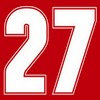NPR a écrit:An international panel recommends that Pluto keep its status as a planet and suggests granting planetary status to several other bodies in our solar system.
Pluto: Is It a Planet?
by David Kestenbaum
Morning Edition, August 10, 2006 · An international panel has unanimously recommended that Pluto retain its title as a planet, and it may be joined by other undersized objects that revolve around the sun.
Some astronomers had lobbied for reclassifying Pluto because it is so tiny. And at least one major museum has excluded Pluto from its planetary display. But sources tell NPR that under a proposal to be presented at a big meeting of astronomers in Prague next week for a vote, Pluto would become part of a new class of small planets. Several more objects could be granted membership.
When Pluto was first discovered in 1930, its planethood was not in question. Early estimates put it at perhaps five times the size of the Earth. Over the years, measurements have consistently shrunk.
Does a Planet's Size Matter?
Pluto is now thought to be smaller than Earth's moon. It has a cockeyed orbit. And most damningly, astronomers now know it is just one of hundreds of rocky things at the edge of the solar system called Kuiper Belt objects. Pluto is larger than most, but one recently discovered Kuiper Belt object -- UB313 -- seems to be larger than Pluto.
So earlier this year, the International Astronomical Union, which has decided tricky nomenclature issues since it was formed in 1919, appointed a panel to try to define the word "planet."
Seven experts, including a science writer and a variety of astronomers, met in Paris this past June. Under the guidance of Owen Gingerich, a historian and astronomer emeritus at Harvard, they debated for two days.
Gingerich would not discuss the conclusions, but says "I think we have done something that will make the Plutocrats and the children of the United States happy."
NPR interviewed five of the seven panel members. All but one said they thought of Pluto as a planet, or had made statements in the public record to that effect.
Dava Sobel, the writer on the panel, was sympathetic to Pluto's cause. In her book The Planets, Pluto merits a chapter.
"People love Pluto, children identify with its smallness," she writes. "Adults relate to its inadequacy, its marginal existence as a misfit." Sobel has several solar system models in her house. Asked if she had torn Pluto off any of them, she said "No, Pluto is definitely there."
New Category: Dwarf Planets
Several panel members have favored dividing planets into categories: terrestrial planets (Mercury, Venus, Earth, Mars), giant planets (Jupiter, Saturn, Uranus, Neptune) and a third class that would include Pluto.
"We'll call them dwarf planets or something," says Iwan Williams, an astronomer at the University of London who favors the idea and also served on the panel.
Sources say the panel's new definition for planets would, in fact, create a third category embracing Pluto.
It's unclear what astronomers will make of the new definition or how they will vote on it. Observers say the definition will have to be concise and unambiguous. What is too small to be a dwarf planet? Do moons count? What about round comets?
Some panel members say they favor counting any object which is large enough that its gravity has made it round. If the object is spinning, a small bulge would be tolerated. "We're talking about no more than four or five new planets," says Iwan Williams.
Small potato-shaped asteroids wouldn't make the cut. But Ceres, a big round asteroid between Mars and Jupiter, might qualify.
The panel's recommendation is being reviewed by the International Astronomical Union's executive committee. In an interview last week, executive committee member Bob Williams said the definition proposed by the panel had some potential problems, and he was not at all sure if the astronomers voting in Prague this month would approve it.
"At this point, I don't feel confident enough to bet in favor of it," he said.
It may be that the objects of the solar system are too varied to be put into neat human categories. Williams is hopeful though.
And he hopes the final definition will fit on two pages.
Pluto's Rocky Road
by Kelly Reeves
1905: Percival Lowell starts the search for Planet X. The planets, including the newly discovered Neptune, didn't move around the sun in quite the way gravitational laws predicted, and Lowell proposes that an undiscovered planet must be the reason why. He never finds Planet X before his death in 1916.
Feb. 18, 1930: Clyde Tombaugh takes up the search in 1929 at Lowell's observatory and proves that discovering new planets is not glamorous work. For a year, he photographs the same section of sky several nights apart and then searches the images for any objects that move like a planet should. On Feb. 18 he looks at his photographic plates and knows right away that one of the dots is Planet X.
May 1930: A little girl in Britain interested in Greek and Roman mythology tells her grandfather over breakfast that the new planet should be named Pluto. He cables the Lowell Observatory, and they unanimously vote for the name because Pluto is the god of the underworld, which seems appropriate for such a cold and remote planet, and the first two letters of Pluto are Percival Lowell's initials.
June 22, 1978: The U.S. Naval Observatory's James Christy discovers that Pluto has a moon. He names it Charon, after the ferryman who take souls into the underworld in Greek mythology, but pronounces it Sharon because his wife's name is Charlene. The existence of Charon meant that scientists could get a better read on the mass of Pluto. They found that Pluto and Charon are actually pretty small. Together, they're smaller than Earth's moon, even.
Aug. 30, 1992: Pluto's tiny size didn't disqualify it from being a planet, but then David Jewitt, an astronomer at the University of Hawaii, and Jane Luu, a researcher at the University of California, Berkeley, discover Pluto isn't the only chunk of rock and out there in the Kuiper Belt beyond Neptune. Scientists have found hundreds of these objects since 1992, so some astronomers start to think that maybe Pluto isn’t so special after all.
Feb. 3, 1999: Pluto's debated status as a planet gets publicity. The International Astronomical Union calms stargazers worried by recent media reports saying the IAU is planning to demote Pluto. Not so, they say in a press statement. They only want to include it in their numbering system for Kuiper Belt objects.
May 11, 2000: Scientists may debate whether Pluto is a planet, but it's place in the classical music canon gets secured. Composer Colin Matthews writes a movement for Pluto into Gustav Holst's The Planets. Although Pluto was discovered in Holst's lifetime, he declined to add it to his suite.
Feb. 19, 2000: The Rose Center for Earth and Space at the American Museum of Natural History in New York City opens -- and sneakily omits Pluto from its list of planets. No one seems to notice until the next year, when the New York Times writes a front page article about it.
Jan. 5, 2005: Michael Brown, a planetary scientist at the California Institute of Technology, discovers what might be the 10th planet, Xena. He says it's rocky and icy like Pluto. When he announces his discovery on July 29, he forces astronomers to decide what makes a planet.
Oct. 31, 2005: The Hubble Space Telescope Pluto Companion Search Team discovers that Pluto has three moons, not just one. Moons don't qualify an object to be a planet, but having a couple moons doesn't hurt Pluto's case.
April 11, 2006: The Hubble Space Telescope finds that Xena is slightly larger than Pluto. Astronomers now have to make a decision: either Xena and Pluto are both planets or neither is a planet.
C'est moi qui doublait les acteurs lors des scènes de poursuite automobile
























